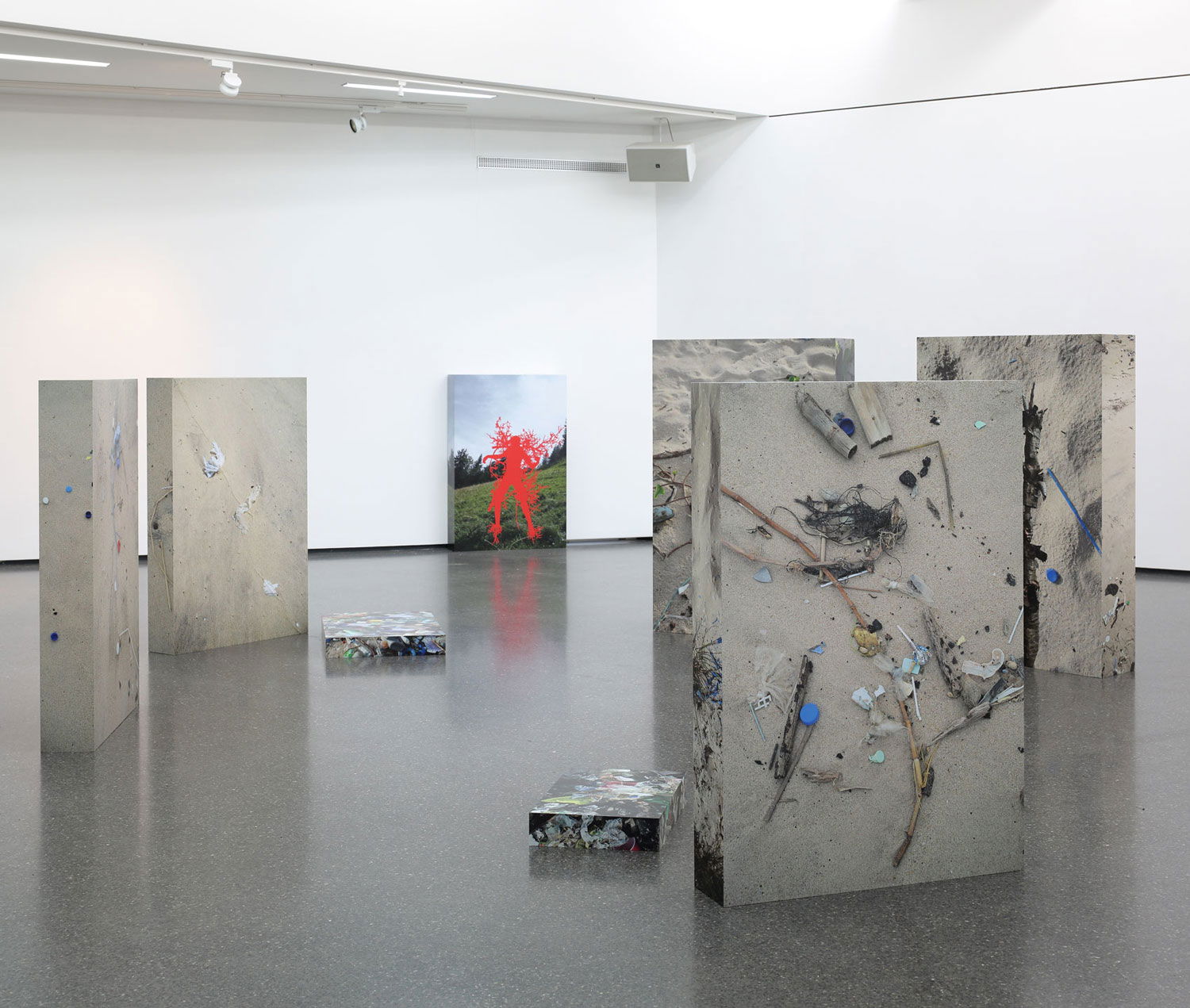Eva Maria Ocherbauer
ONE FINE DAY SOON
Eva Maria Ocherbauer constructs her worlds of photographic images from forms of nature as well as everyday objects and consumables. The quadrangular photograph is often dissolved and transferred to the outlines of the object in question or expanded into the three-dimensional. Thus plastic parts on a beach mutate into monumental objects which, in their aesthetic presence, raise questions about the relationship between image and reality. For Ocherbauer photography is also a means of transforming the utterly banal things of everyday life and making them appear both astonishingly beautiful, but also alien in the photograph itself. Things become icons of themselves and raise questions about the possibilities of photography as a medium, but also about the fraying edges of human civilisation.

The exhibition “ONE FINE DAY SOON“ looks at the complex relations between human society and the world of nature.
In this dramatic production the Gallery becomes a stage with various roles assigned to the image material on show. Remnants of plastic are cast into leading roles; there is a performance by Jelili Atiku; and a spider’s web literally pulls all the threads. That web also defines the colour scheme for the exhibition, combining all the individual elements, which primarily have been assigned an associative perception. And then there is the choir, images that emphasise the figurative and allow a meticulous exploration of the transformations addressed here.
The stage set is inspired by the Stonehenge monument erected during the Neolithic period. The exhibition showcases the circular structure, with the photographs arranged like its standing stones, occupying positions inspired by the historical installation. Stonehenge is purported to have had many functions: a place of religious worship, but also a main burial site and an astronomical observatory − all of which can be associated with “ONE FINE DAY SOON“, too. The ritual as such, the cycles, the transformations, and cosmic orders underpin this exhibition.
In terms of content it is about patterns of behaviour and, relating to that, the loss of control. On show are pieces of plastic that found a temporary site on Elegushi Beach in Lagos, the way in which they are slowly decomposed by the sand and ultimately gathered up by the waves of the ocean. As such, they have surrendered to natural processes and are immune to all human influence. This contrasts with a commingling of man and nature using staged images as a sort of allegory. Here, too, we are witness to an elementary submission to existing laws and regularities. All the photographs have been subjected to artistic manipulations, eluding so-called real-world representation.



